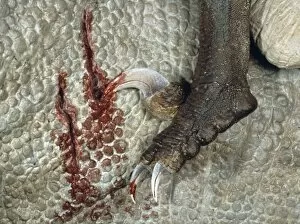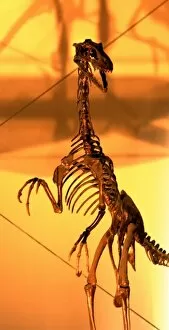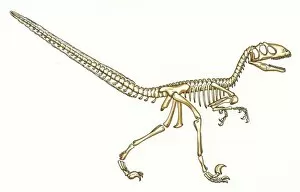Dromaeosauroidea Collection
"Dromaeosauroidea
For sale as Licensed Images
Choose your image, Select your licence and Download the media
"Dromaeosauroidea: Unveiling the Fierce and Fascinating World of Raptor Dinosaurs" Step into a prehistoric realm where ferocity meets elegance as we explore the captivating world of Dromaeosauroidea. These remarkable creatures, known for their razor-sharp claws and swift movements, have left an indelible mark on our understanding of dinosaur evolution. Among them, Velociraptor stands out with its iconic portrayal in popular culture. Its sleek body and intelligence make it a formidable predator, capable of taking down prey much larger than itself. But did you know that Velociraptors were not alone in their mastery of hunting? Enter Microraptor, whose delicate yet intricate skeleton reveals astonishing details about its ability to glide through ancient skies. This miniature marvel challenges our perception of dinosaurs' capabilities by showcasing evolutionary adaptations beyond imagination. Meanwhile, Tenontosaurus found itself at the mercy of Deinonychus's relentless attacks. With its curved talons and keen senses, Deinonychus was a true terror on land—an apex predator capable of bringing down even large herbivores like Tenontosaurus. But let us not forget Dromaeosaurus—a fuzzy raptor that roamed North America during the Late Cretaceous period. Its name translates to "running lizard, " aptly describing its agility and speed while hunting for prey or defending against rivals. Dromaeosaurus albertensis takes center stage among these fascinating predators—its fossilized remains providing valuable insights into the lives they once led. As we study these fossils meticulously preserved over millions of years, we uncover secrets hidden within every bone fragment. With each discovery comes a deeper appreciation for the diversity within this group—the variations in size, shape, and behavior among different species such as Dromaeosaurus or Velociraptor highlight nature's endless creativity when it comes to survival strategies.











